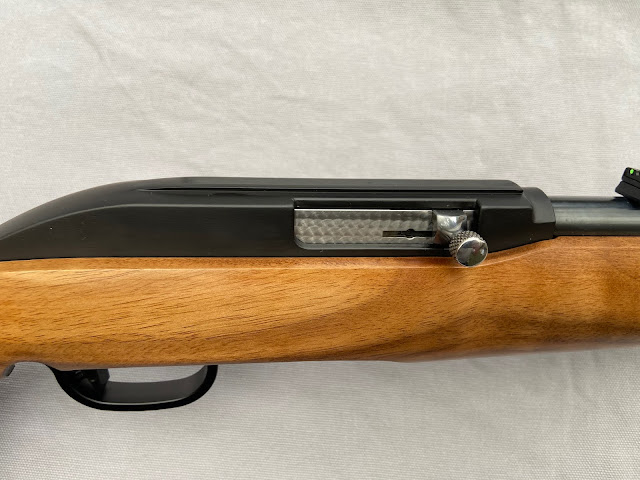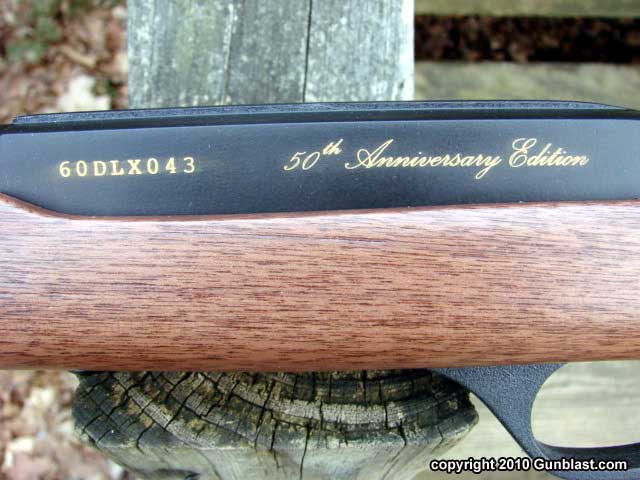You may not recognize the name Asa Waters but his contributions to America and the world of firearms are worthy of remembering.
The many armories owned and operated by the Waters family went by numerous names, for the sake of this article, we'll just call them "Waters' armory".
The Waters family can trace their lineage to an iron monger (blacksmith) in London, a Mr. James Waters (born August 29th, 1568). James was married to a Phoebe (nee Manning) and had a son named Richard. Phoebe Manning was a descendant of a notable Crusader Symon Manning.
After the death of James Waters in 1618, Phoebe married a Mr. William Plasse, a gunsmith in London.
In 1630 William, Phoebe, Richard along with Plasse's daughter Rejoice (from a previous marriage) left London and emigrated to the Massachusetts Bay Colony village of Naumkeag (now known as Salem).
This was very interesting to me as my earliest family member arrived in Naumkeag (Salem) in 1629. I wonder if my family and theirs ever crossed paths?
Young Richard Waters married his step sister Rejoice (no blood relation) and began his training by his step father in the gunsmithing trade. They made flintlock rifles, probably "Kentucky Rifles" for the colonists.
This started a tradition that spanned seven generations of Waters in America.
For the sake of time we will fast forward a few generations....in 1715 Nathaniel Waters purchased land in and around the Blackstone river in what became the town of Millbury, MA (just south of Worcester and an hours drive west of Boston). Nathaniel died 3 years later, it is doubtful he ever lived on the land.
On January 27th 1742 Asa Waters the first, was born in Millbury.
Later he and his brother Andrus built a trip hammer mill along the banks of the Singletary Brook (which feeds into the Blackstone River). This was on the land they inherited from their father Johnathan Waters, as stated before, having originally been purchased by their great grandfather Nathaniel.
The Waters brothers built rifles for the Patriots during the Revolutionary War, but also answered the call of duty.
Asa Waters (the elder) was summoned the night of Paul Revere's ride (April 18th, 1775) and commanded one of the companies from Millbury to presumably Concord.
In October of 1776 the new Government commissioned Waters (the elder) to build and maintain a gun powder mill on the banks of the Singletary Brook.
Asa the elder died in 1799, but his legacy was just beginning. His son (ASA Waters II) and grandson (Asa H Waters) both went on to run the family's armory and both died very wealthy.
Asa Waters II (pictured above) was born on November 2nd, 1769.
As with all previous generations of Waters in America Asa the younger and his brother Elijah were trained in the gunsmithing art and in 1808 built a new armory on land given to them by their father. The land which encompassed the Blackstone River and Singletary Brook had been in the family since 1715.
It was here that the brothers built muskets under contract for the U.S. Government during the War of 1812.
It was also at this armory that Thomas Blanchard (working with Waters) worked out the details of his machine tool lathe, designed to streamline gun barrel making and allow them to be made identical to one another. I have read, but not confirmed that Water's name is also on the patent.
Blanchard went on to work at the Springfield Armory where his lathe was employed as well as a Blanchard designed stock duplicator.
below is a model of 1812 flint lock musket built at the Waters Armory
In 1814 Elijah Waters passed away unexpectedly, leaving his brother to carry on the tradition.
In 1825 Asa Waters the younger began building a stately mansion on Elm Street, just a short walk from the Armory.
Asa Waters II had 8 children, one of them Asa Holeman Waters.
Asa Holeman Waters, born in 1808, and left home in 1824 to be "fitted for college" at Monson Academy (the same town in which Dan Wesson revolvers were made some 150 years later). He then went on to graduate from Yale University (in New Haven, the later home to Winchester, Marlin & Mossberg). In 1837 he, along with his siblings took control over the family armory and continued the tradition of arms making. In 1841, after his Father's death, AH Waters inherited the armory as well as the Bank of Millbury.
He also wrote a book about Thomas Blanchard and his inventions.
He later became president of his father's bank and also served in the Massachusetts State Legislature. He was a Republican and an Abolitionist, it is rumored his home on Elm Street became a stop on the Underground Railroad.
In 1845, at the request of the U.S. Government, the armory was closed. Between 1845 and 1860 relatively few guns were produced under contract for others at the armory.
I have read, but have not confirmed that in 1852 at least some of the machinery from Waters' Armory was sold to the State of South Carolina, dubbed the "Palmetto Armory", and was used to build rifles and later cannons, until it was burned by Sherman's troops in 1865.
In 1855 AH Waters built the first carbines for Benjamin Franklin Joslyn, helping launch Joslyn's career as a gun maker.
In 1859 the Waters Armory received an order from gun designer James Durrell Greene to make 4,500 rifle for export to the Imperial Russian Government. The guns were of a breech loading, under-hammer design.
With the outbreak of the Civil War, the armory was reopened and AH Waters was commissioned a Colonel to command a regiment of volunteers from his home town of Millbury.
It is not known how many rifles the Waters armory produced for the Union Army, but it has been written they worked night and day with as many as 200 employees.
After the war the armory was shuttered for the last time. Seven generations of gun making came to an end.
Asa Holman Waters retired after the war and set off for Europe in 1874/75. AH, his wife and two of their daughters toured Europe. They spent time Constantinople visiting with their 3rd daughter who was living there with her husband Professor E.A. Grosvenor (Father to Gilbert Hovey Grosvenor). In 1876 AH climbed the Great Pyramid at Giza.
Upon returning home he spent the rest of his days in the mansion his father had built on Elm Street, dying at the age of 78 in 1887.
Time Line of Events
1630 - Richard Waters arrives in Salem, MA
1715 - Nathaniel Waters purchases land in Millbury
1742 - Asa Waters I is born January 27th
17XX - Asa I and Andrus Waters build hammer mill on Singletary brook to make guns
1769 - November 2nd, Asa II is born
1775 - April 18th - Paul Revere makes his famous ride
1775 - April 19th, The Battles of Lexington & Concord
1776 - July 4th, United States of America declare independence
1776 - October 18th, US Government Commissions a powder mill in Millbury and appoints Asa Waters to manage it
1808 - A new armory is constructed on the banks of the Blackstone River
1808 - Asa H. Waters is born
1814 - Elijah Waters dies
1841 - Asa Waters II dies, Asa H Waters assumes control of the business
1845 - The Armory is shuttered for lack of government contracts, remaining in business only for private contracts
1861 - The Armory is reopened to build rifles for the Union Army
1865 - The Armory is closed for the last time
1887 - Asa H. Waters dies
What Remains
The Asa Waters mansion (completed in 1829) still stands and is rented for weddings and other events.
The Armory is long gone, in its place is the local VFW hall. A fitting enterprise to be located on such historic ground.
In this picture you can see the VFW Hall on the left and the Waters' mansion on the right. They can be found at 16 S. Main Street (VFW) and 123 Elm Street in Millbury, MA.
Another view showing the VFW and the Blackstone River
And a view from the river, looking up the bank at where the armory once stood
Legacy
The United States of America stands as a beacon of freedom to people all over the World thanks to families like the Waters. Their contribution to liberty is immeasurable. The town of Millbury, the state of Massachusetts and the United States of America are their legacy.
Two of Asa Waters II great great grandsons also went on to prominence. One was Gilbert Hovey Grosvenor, the father of photojournalism and the editor of National Geographic for 55 years (1899 to 1954).
Another was William Howard Taft, who held many titles including two of the most important. He was elected as the 27th President of the United States in 1908 and served until 1913, then in 1921 was appointed and confirmed as the Chief Justice of the Supreme Court. The only person in history to have held both positions.
Sources:
Wikipedia
Blackstone Heritage
Millbury Sutton
Worcester Society of Antiquity
American Society of Arms Collectors
National Park Service
























































